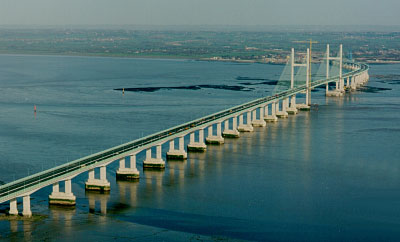 (Image courtesy of The Severn Estuary Strategy) The Severn Estuary is Britain's largest coastal plain estuary and has a distinctive funnel shape that produces the famous Severn Bore. This funnel is made due to the rapid decrease in the depth and width of the Severn River, therefore as the incoming tide travels up to the estuary it is routed into a decreasing channel which causes a bore to form. The estuary is located on the west- coast of Britain, with five major rivers emptying into it. The estuary and its coastal areas support major cities including Bristol and Cardiff. These cities contain important harbors and ports that continue to play vital economic and social roles. A characteristic of the estuary is its expansive floodplain landscape. Views of low-lying coastal areas such as Gwent Levels and Exmoor, as well as others, dominate the northern and southern shores. The low-lying coastal areas provide rich wetlands and coastal scenery, which are home to many forms of wildlife. The estuary has become internationally famous for supporting waterfowl. It is such an important area due to its location in relation to birds' migratory routes, having nearly 37 miles (60 km) of continuous sand and mudflats along its northern shore, and a west- coast location that has a mild winter climate. The waterfowl and other wildlife attract many visitors each year to the estuary. Tourism plays an important economic role in the estuary and its surrounding areas. The estuary provides a diverse environment for a large variety of sporting and recreational activities. These include boating, sailing, beachcombing, and fishing from many locations along the shore. |